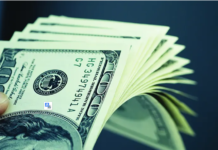
Bangladesh is set to request the International Monetary Fund (IMF) within a week to extend $700 million in emergency financing to help the country avoid being overwhelmed by the coronavirus pandemic.
The amount is about half the sum Bangladesh can seek from the IMF under the country’s quota as special drawing right (SDR), a form of reserve assets that can be used by countries as additional liquidity.
The tool credits member countries’ accounts with new, unconditional liquidity that could be exchanged for the five currencies that underpin the SDR: the dollar, the yen, the euro, sterling and the renminbi.
Bangladesh has sought SDR500 million to address the balance of payment issues, and one SDR equals $1.36.
Finance Minister AHM Mustafa Kamal would send a letter of intent to the Washington-based multilateral lender outlining how the support would be used, said a finance ministry.
Under normal circumstances, when the IMF is the last-resort lender to a country, it insists that the borrowing government tighten its belt and exercise restraint in public spending.
This helps to achieve three objectives. One is to stabilise the public debt burden, to ensure that the resources made available are not wasted. The second is to limit the whole economy’s need for foreign exchange, a shortage of which had prompted the country to seek the IMF’s help in the first place.
And the third is to ensure that the IMF can get repaid. Since the Fund does not take any physical collateral from countries to whom it is lending, the belt-tightening helps to act as a kind of collateral.
In other words, it helps to maximise the probability that the IMF does not suffer losses on its own loan portfolio — losses that would have bad consequences for the fund’s role within the international monetary system.
The last time Bangladesh borrowed from the creditor under the extended credit facility, it was handcuffed with a host of conditions.
But a belt-tightening may not be suggested this time because spending is needed to stop people dying or from falling into a permanent trap of unemployment.
Besides, countries all over the world are facing a shortage of foreign exchange, not because they have indulged in any irresponsible spending sprees, but because of a virus beyond their control.
For example, with rising expenditures and declining revenues, additional government financing requirements this fiscal year are estimated at $8.8 billion, which is 14.2 per cent of the budget.
Facing constraints on domestic borrowing, the government urgently needs external financing to support key pro-poor initiatives and to inject fresh liquidity into the economy to increase aggregate demand.
In fact, IMF’s message to its members is, “please, spend as much as you can and then a little bit more,” said its managing director Kristalina Georgieva recently.
However, the lender would like to see how Bangladesh spends the money and whether the support is used to boost economic recovery, support affected exporters, to enhance social safety nets spending and aid agriculture, the finance ministry official said.
It would also like to look at whether Bangladesh spends money to strengthen its weak health system.
The government has announced an $11.2 billion pro-poor countercyclical package — which is 3.3 per cent of Bangladesh’s GDP — with a focus on social protection for the poor and support for key industries to preserve jobs.
Lending to Bangladesh would not raise eyebrows since the country has a good repayment record and the debt ratio is well within control.
Public debt in Bangladesh was $105 billion in fiscal 2018-19, which is about 34.9 per cent of GDP, and the external public and publicly guaranteed (PPG) debt ratio was 14.5 per cent of GDP. Both are low.
The additional external debt of $2.9 billion, as government projected, will increase both the external PPG debt–GDP ratio and public debt–GDP ratio by 0.9 per cent this fiscal year.
The IMF last allocated funds from the SDR to the member countries in 2009 in the wake of the global financial crisis.









